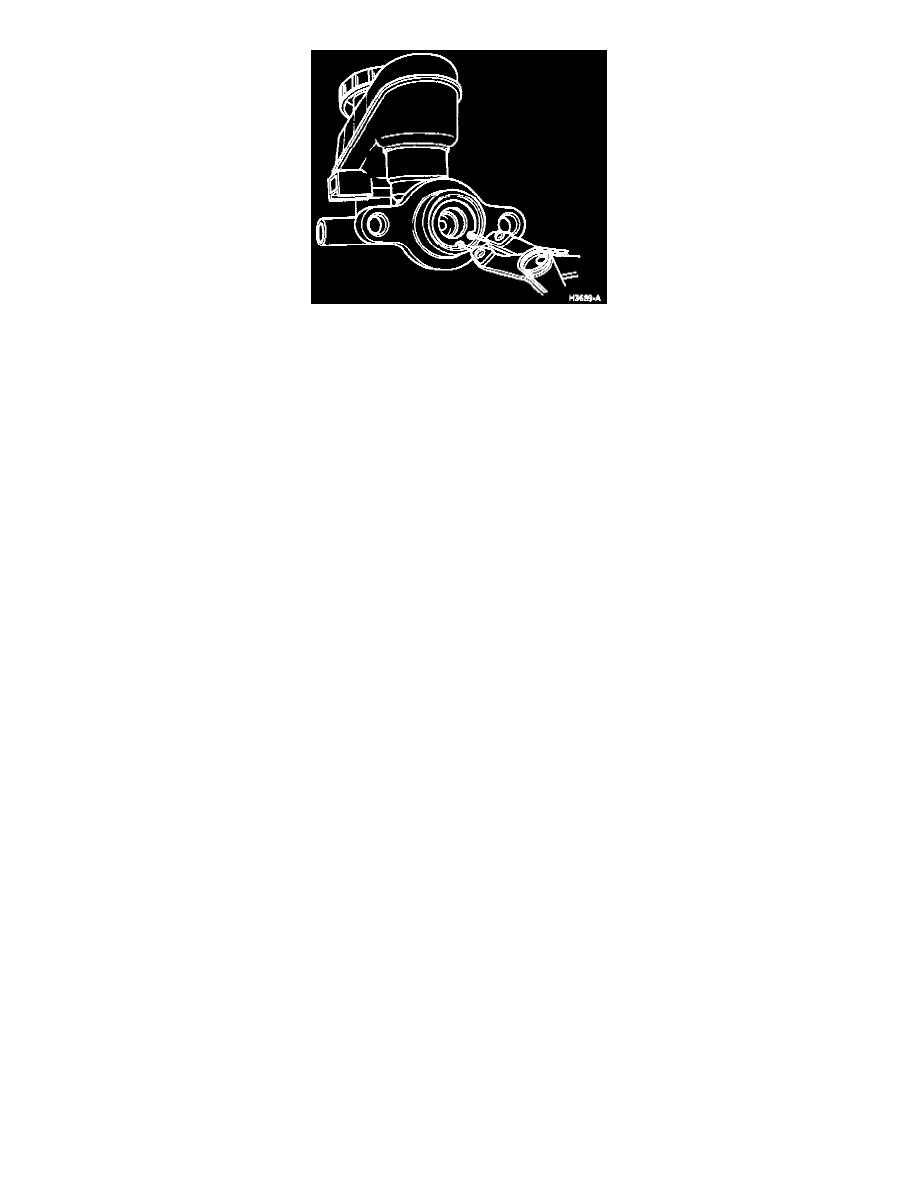Taurus V6-182 3.0L DOHC SHO (1992)

Snap Ring
2. Depress primary piston and remove snap ring from retaining groove at the open end of the bore.
NOTICE: If master cylinder is to be put into vise to aid in disassembly, mount into vise by flange only to avoid damage to bore or reservoir
areas.
3. Remove primary and secondary piston assemblies from master cylinder. Tap open end of cylinder on bench to remove pistons. If secondary piston
does not readily come out, apply air pressure to secondary outlet port to assist removal.
4. Remove the pressure control valves (wagon only).
INSPECTION
1. Wash master cylinder body, especially bore, along with primary and secondary piston assemblies in clean brake fluid, isopropyl alcohol or brake
parts cleaner.
2. Inspect seals on primary and secondary piston assemblies for cuts, nicks, scratches or signs of wear and for presence of any blistering or swelling.
NOTICE: Blistering or swelling indicates contamination of brake fluid by a petroleum-based solvent or oil. In that case, all rubber components in
the brake hydraulic system must be replaced and the entire system must be flushed with clean brake fluid to prevent recontamination.
If contamination is found, the components which must be replaced are:
^
Front brake caliper seals.
^
Rubber front brake hoses.
^
Rear wheel cylinder seals.
^
Rubber rear brake hoses.
^
Pressure control valves.
^
Primary and secondary piston assemblies.
^
Reservoir grommets.
^
Cap assemblies.
3. Inspect master cylinder bore for pitting, corrosion or heavy wear. Heavy wear is characterized by scoring or galling of metal.
CAUTION: The aluminum body of the master cylinder is anodized. Some signs of bore wear, as evidenced by lighter areas of the anodized
surface, are normal and not detrimental. Honing of the bore on aluminum master cylinders is not permitted as the anodic coating and hardness
could be removed.
ASSEMBLY
1. Dip replacement piston assemblies in clean DOT 3 brake fluid for lubrication prior to assembly into cylinder.
2. Install secondary (smaller) piston assembly into bore, spring end first.
3. Install primary piston assembly, spring end first.
4. Depress primary piston and install snap ring.
5. Install the pressure control valves, tighten to 13-22 Nm (10-16 ft lb).
6. Fill master cylinder and perform brake bleeding procedure.
7. Install cap on master cylinder reservoir and secure.
